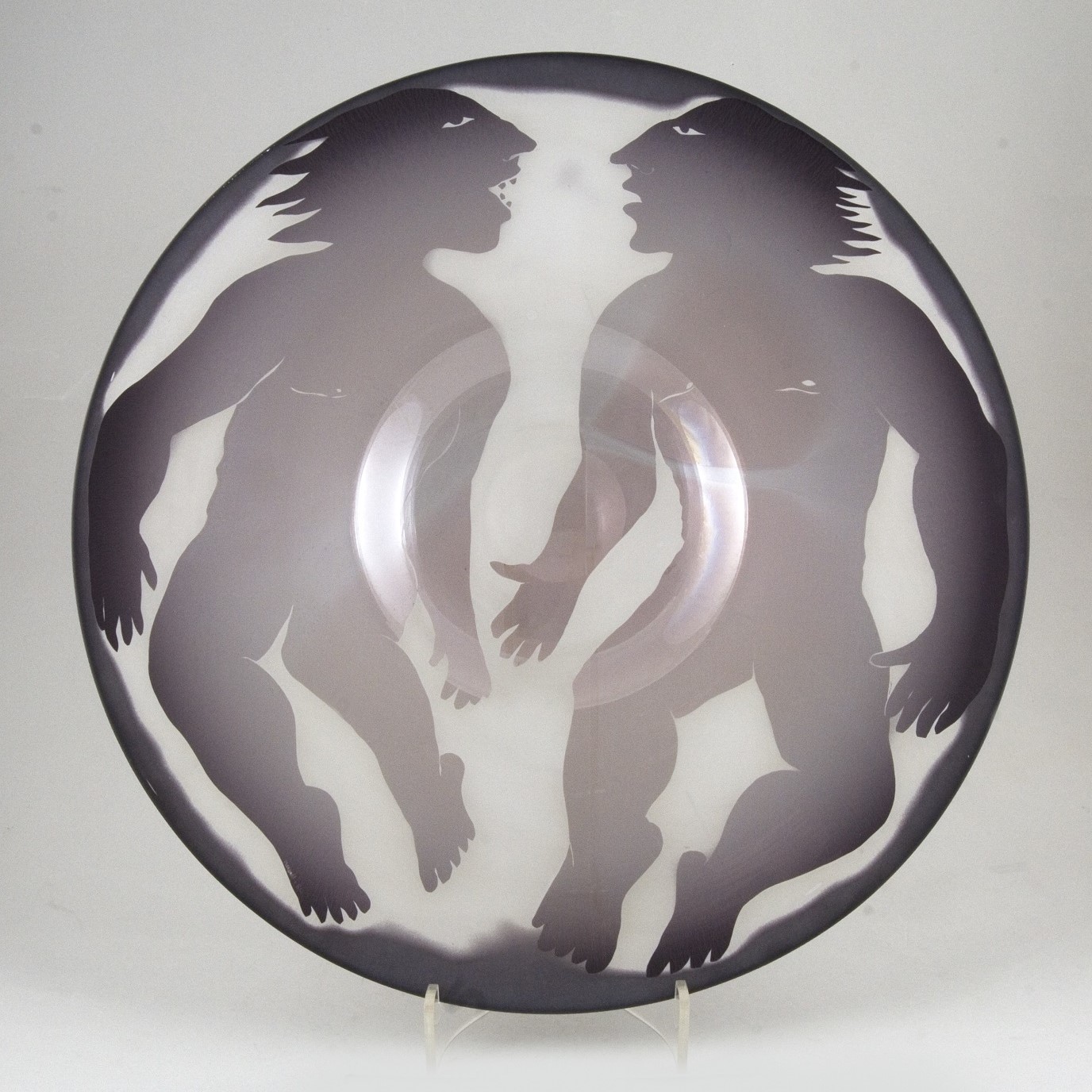Castor and Pollux Dish
24 March 2023
This large purple dish with a design that features two figures is inspired by a beautiful Greek myth. Make sure you take a look at it when you visit our 'People and Place: Art Collection Showcase'.
The dish is by an artist called Stephen Newell and was acquired for Plymouth's permanent collection in 2007, thanks to the support of the Contemporary Art Society.
We have an interesting glass collection which includes tableware from the 1700s and 1800s, as well as a pair of green goblets from the 1600s and art nouveau pieces from the 1900s. Since the start of the 2000s, we’ve acquired new pieces that represent different making techniques.
This dish is hand blown - an ancient technique that’s remained unchanged for centuries and which is highly popular within glassware. Molten glass is gathered from a furnace and inflated into a bubble using traditional tools. The glassworker or artist then works it into their chosen shape. An alternative method involves using a steel mould or container to help give a standardised shape to the glass as it cools. The decoration has been etched or scratched on to the glass which has been sand blasted to create a smooth finish.

Newell’s work often features mythological figures or stories from legends – something well suited to glass which can often look quite magical when light shines through it.
We believe the two figures are Castor and Pollux. In Greek legend they were twin brothers who shared the same mother, Leda. Pollux’s father was Zeus, which made him a God and therefore immortal. Castor’s father was a King called Tyndareus, which made him a human and therefore mortal.
The brothers were inseparable, so when Castor died Pollux was heartbroken. He asked if he could share his immortality with his brother or give it up. Zeus took pity on them and united them in the heavens as part of the Gemini constellation so they could remain side by side forever. The constellation includes 85 stars that are visible to the naked eye. The brightest star is Pollux. The second brightest is Castor.
Castor and Pollux have featured in or inspired many works since ancient times – from poems and plays to festivals and operas. They even get a mention in the New Testament of the Bible. Most tales about them portray Castor as a skilled horseman and Pollux as an expert boxer. They’re also considered to be the protectors of sailors.
They’re sometimes seen as symbols of inequality: although they’re twins, one is immortal while the other is not. More often, they’re symbols of brotherhood and the bond that unites people even after death.
You can see this dish in the mass display case in our People and Place: Art Collection Showcase throughout the year.